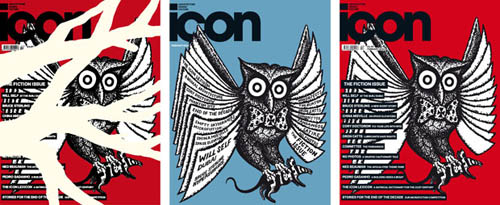Bruce Sterling has thrown in the towel on his long-running blog, “Beyond the Beyond,” with an interesting farewell note. I’ve read his blog for ages; in fact, the fourth post I ever wrote here—a weird and, in retrospect, not particularly interesting riff on the possibilities of lunar 3D-printing—was in response to one of his posts.
I will quote his goodbye note at length here, but please feel free to read the whole thing.
Unlike most WIRED blogs, my blog never had any “beat”—it didn’t cover any subject matter in particular. It wasn’t even “journalism,” but more of a novelist’s “commonplace book,” sometimes almost a designer mood board. (…) Posting on the blog was a form of psychic relief, a stream of consciousness that had moved from my eyes to my fingertips; by blogging, I removed things from the fog of vague interest and I oriented them toward possible creative use. (…) I used to toss a lot of stuff into the blog that looked “funny,” but a lot of it was testing the very idea of significance. “Does this odd thing I found matter to anyone in any way whatsoever?” Will there be a public response of some kind to this? You can never get that response from a diary, a notebook, a studio corkboard. A blog, though, has an alternating current; so maybe some little meme will catch on and glow. (…) Throwing spaghetti at the wall of a blog to see if anything would stick, that actually kept my interest up, it was motivating. It wasn’t drudgery; I was willing to get up in the morning and do that, it seemed fun, life-enhancing. (…) I knew from the beginning that my weblog would surely cease some day, and I frequently warned readers that “blogs,” the “internet,” desktop computers, browser software and so forth, were all passing phenomena. They were indeed period artifacts, some with the lifespan of hamsters. The content of my blog “rotted” quickly too, since most things I talked about, or linked to, are long gone. (…) I was spreading myself thin, acting the dilettante, and commonly sticking my nose into scenes and situations that were none of my business. Often, I had little to offer, too, other than some quip and a link. But that was my good fortune; I chose the bohemian downsides, the life of archaic niches and avant-garde clutter; I preferred the dead factory and the palace attic.
And now he’s chosen other media entirely.
As the slower pace of posting here on BLDGBLOG over the last two or three years has no doubt clearly indicated, the pull of regular blogging—the urgency of it, the personal routine and daily discipline of writing online, the sense of audience, the faith that other people out there share these interests—has changed dramatically with the new internet, today’s cramped and disappointing version of online life that is now nothing but reaction GIFs and Donald Trump.
I remember hearing a story once when I was a kid about a guy who crashed his car out on a remote country road somewhere. He got pinned in place somehow, unable to move or call for help; his car’s tape deck was the kind that would auto-flip to the other side of the tape, play through to the end, then flip back over and do it all over again, in an endless loop. The guy allegedly spent like seven hours pinned in his still-running car, listening to Wham! the entire time, over and over and over again, with no way to turn it off. That’s what the internet feels like now, only it’s not George Michael, it’s Donald J. Trump and the Hydroxychloroquine Cure, and it’s enough to make anyone quit blogging.
Anyway, good luck, Bruce. Thanks for the nearly two decades of “Beyond the Beyond.”
(Update: Incredibly, that Wham! story seems to be true.)

